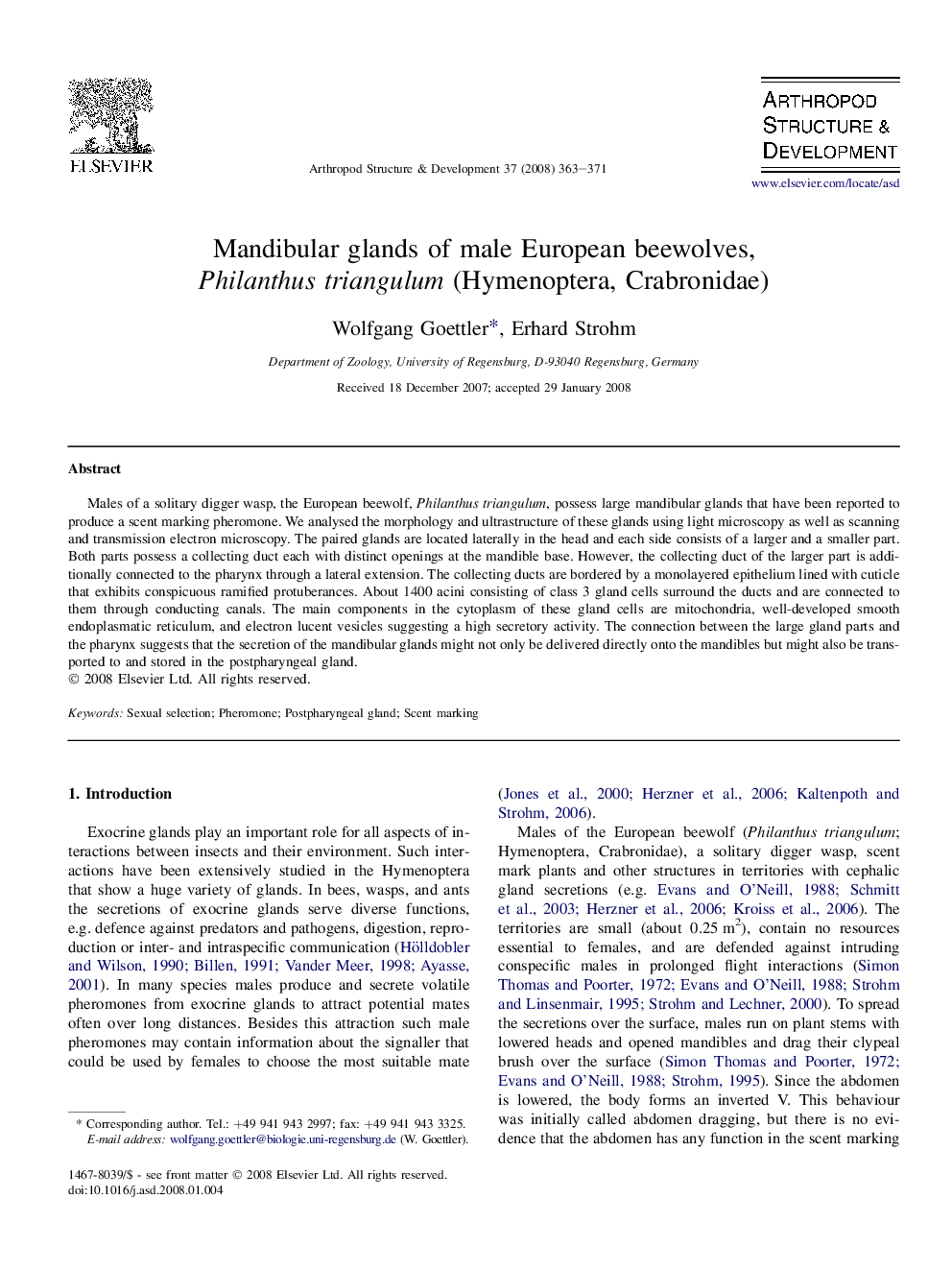| Article ID | Journal | Published Year | Pages | File Type |
|---|---|---|---|---|
| 2778848 | Arthropod Structure & Development | 2008 | 9 Pages |
Males of a solitary digger wasp, the European beewolf, Philanthus triangulum, possess large mandibular glands that have been reported to produce a scent marking pheromone. We analysed the morphology and ultrastructure of these glands using light microscopy as well as scanning and transmission electron microscopy. The paired glands are located laterally in the head and each side consists of a larger and a smaller part. Both parts possess a collecting duct each with distinct openings at the mandible base. However, the collecting duct of the larger part is additionally connected to the pharynx through a lateral extension. The collecting ducts are bordered by a monolayered epithelium lined with cuticle that exhibits conspicuous ramified protuberances. About 1400 acini consisting of class 3 gland cells surround the ducts and are connected to them through conducting canals. The main components in the cytoplasm of these gland cells are mitochondria, well-developed smooth endoplasmatic reticulum, and electron lucent vesicles suggesting a high secretory activity. The connection between the large gland parts and the pharynx suggests that the secretion of the mandibular glands might not only be delivered directly onto the mandibles but might also be transported to and stored in the postpharyngeal gland.
